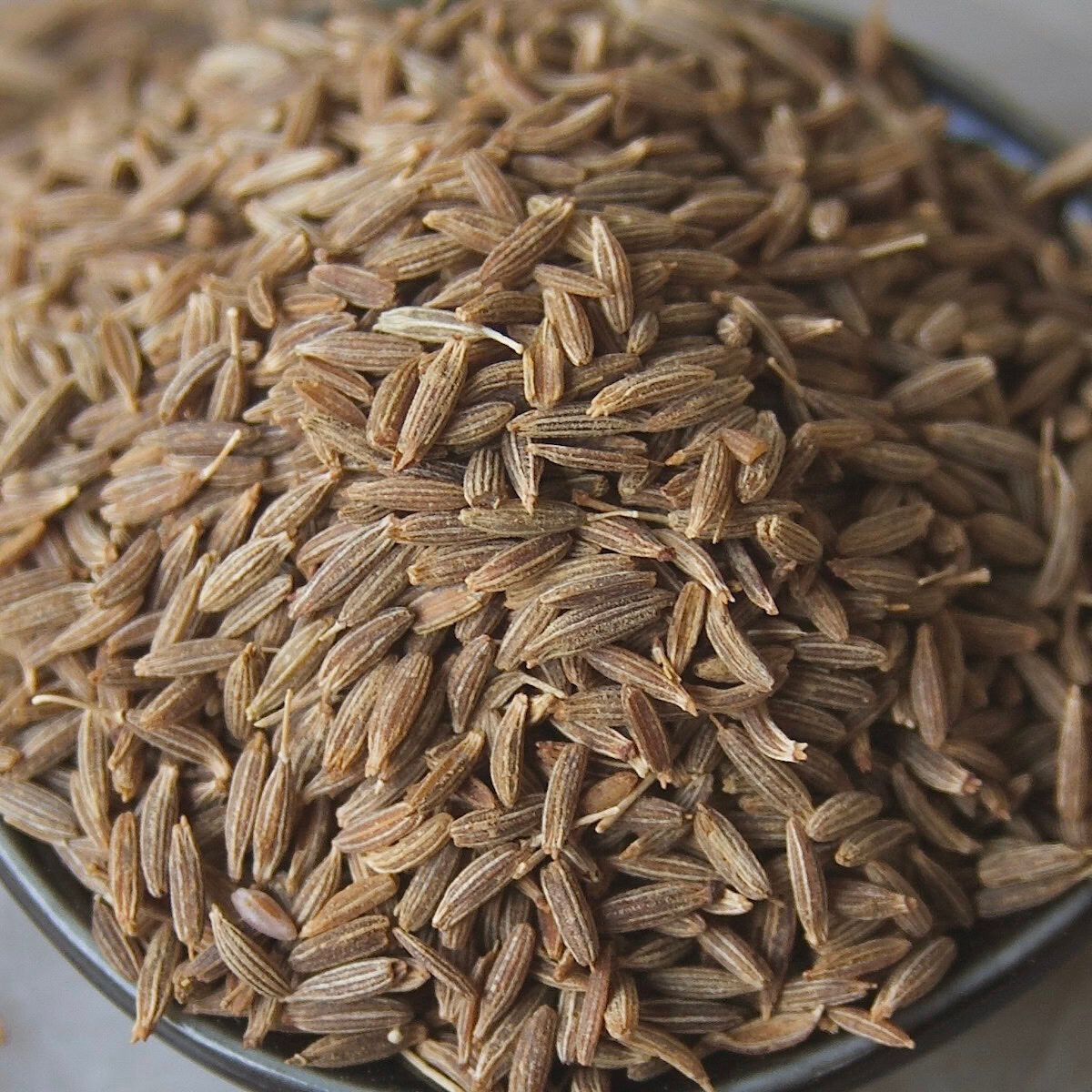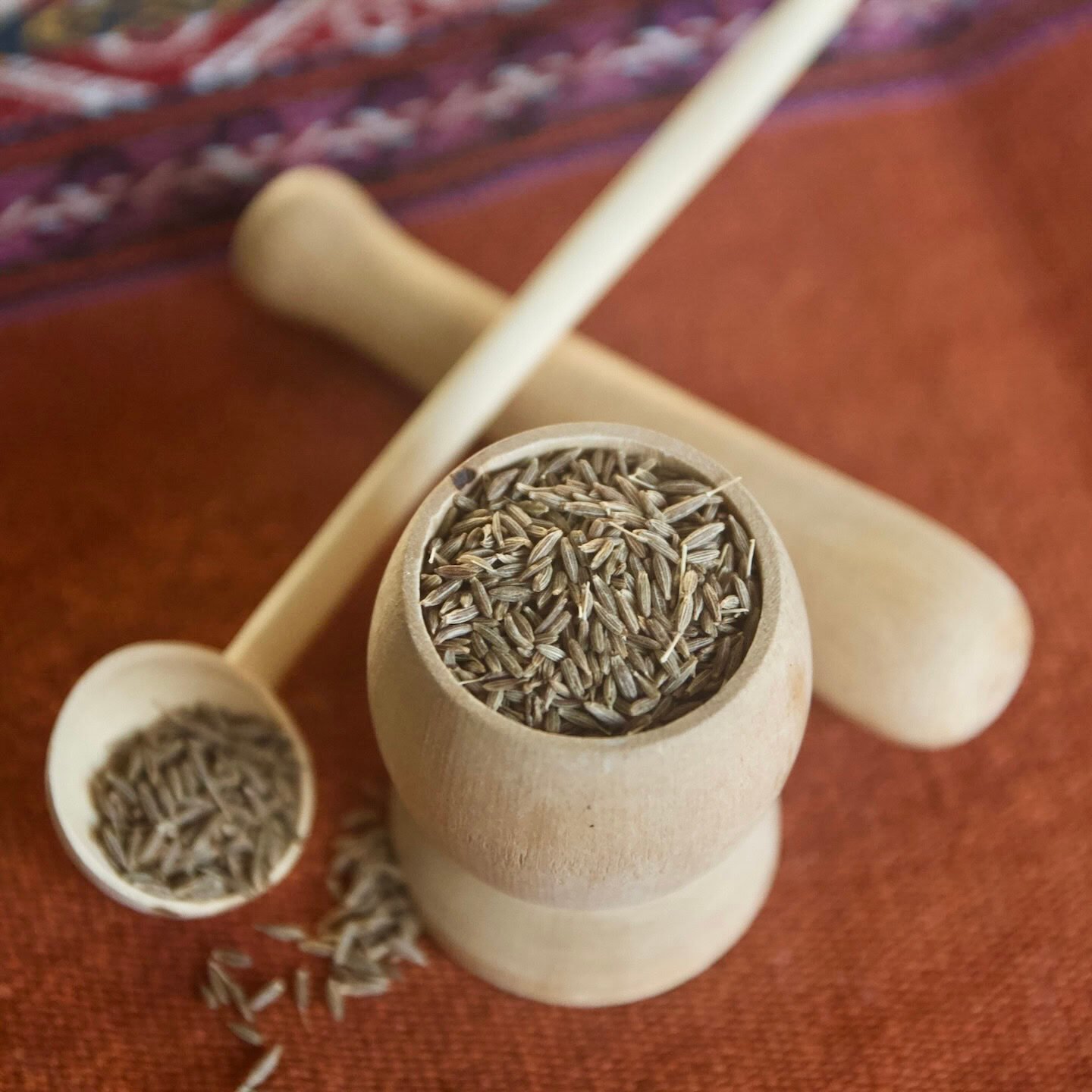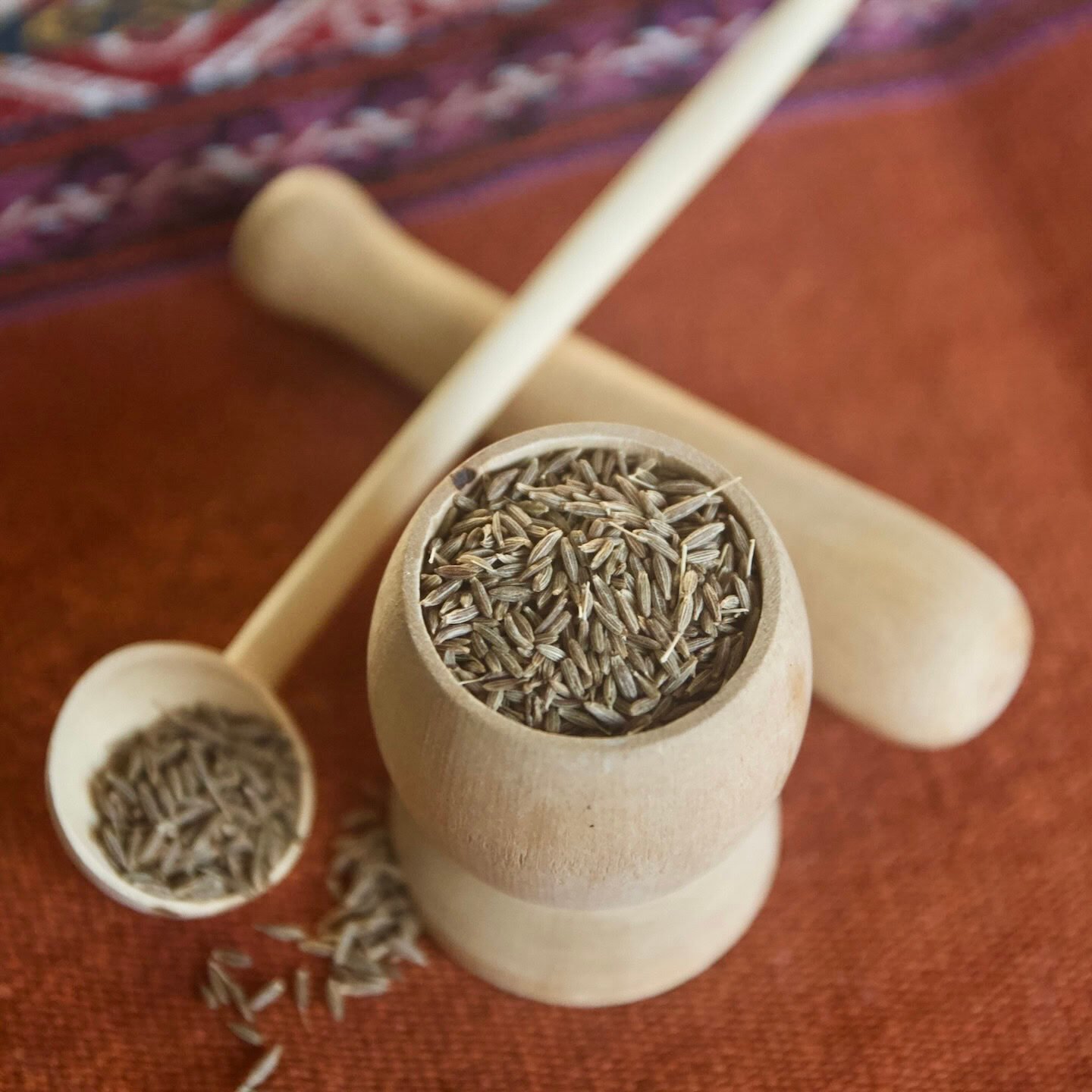Cumin
Cumin is the spice produced from the tiny fruit (often called "seeds") of the Cuminum cyminum, an annual herb in the parsley family.

REGION OF ORIGIN
Cumin’s precise origin is still debated, but evidence suggests its journey started in the Fertile Crescent. Archaeological finds in ancient Mesopotamia date cumin use to at least 2000 BCE.
PART & COLOR
Like the other “seed” spices in the parsley family (anise, caraway, coriander, dill seed, and fennel seed), cumin “seeds” are actually tiny, narrow fruit called schizocarps. They have 8 ridges running down their length, giving them a slightly rough texture. The color is warm and earthy, almost amber. Ground cumin is a fine, rich yellowish brown powder.
HARVEST
Cumin is a warm-season annual herb that thrives in full sun and well-drained soil. It is typically sown in the spring after the last frost and requires about 100-120 days of growth. In the late summer or early autumn, the fruits are ready for harvest when they turn from green to a light golden-brown color, but before they reach maturity. When schizocarps fully ripen, they split open, so the whole fruit must be harvested before that happens. The whole plant is cut at the base, dried upside down, and threshed to separate the fruits.

FLAVOR & AROMA PROFILE
Cumin has an unmistakable aroma—warm, sweet, and citrusy with a faintly smoky quality that adds an additional layer of depth. Its complex, robust scent, reminiscent of sun-baked earth and toasted spices, changes when the “seeds” are roasted or ground, releasing new rich, nutty notes.
On the palate, cumin delivers a complex flavor that starts with a deep earthiness, followed by a slightly bitter undertone that balances the overall taste. Its initial warmth gives way to a mild sweetness with hints of citrus and pepper. The total experience is very satisfying.
Cumin is blessed with a wealth of aromatic compounds like cuminaldehyde and p-cymene that are the unsung heroes behind these unique and well-rounded characteristics. It is an irreplaceable spice that brings warmth and balance to countless recipes worldwide.
CULINARY USES
A staple in Indian cuisine, whole cumin is often tempered in hot oil or butter to release its aromatic oils into everything from curries, dals, and vegetables to the beloved rice dish biryani and the popular street food chaat. Ground cumin is central to many Indian spice blends, its earthy, warm notes pairing perfectly with the richness of the cuisine.
In Mexico, cumin is essential to chili powder, tacos, and enchiladas, balancing the smoky heat of chili peppers and the freshness of cilantro. It also seems to unlock hidden flavors within black beans. In Middle Eastern cuisine, cumin adds complexity to grilled meats, vegetables, and various dips like hummus and baba ghanoush.
In the Mediterranean, it makes important appearances in sausages, stews, and breads. Across cultures, cumin deepens dishes with its timeless aromatics.



